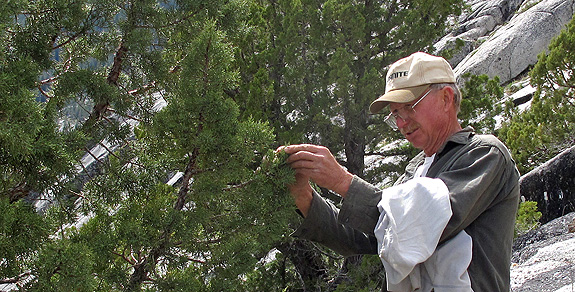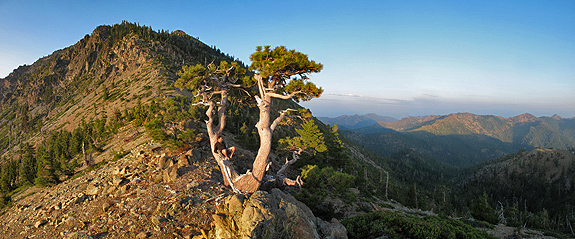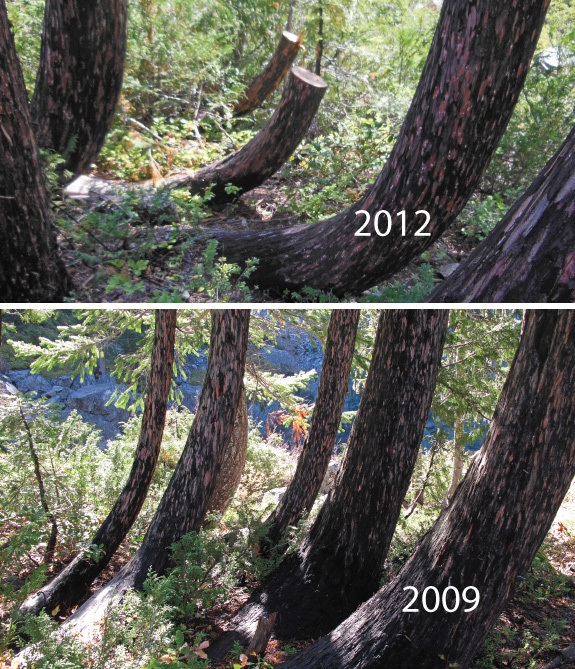Original Post DATE: 2/10/2013
The internet is an amazing thing. It opens up lines of communication that were unheard of in the past. Case in point–I got an email from Richard Moore who lives in Callahan, California. He knows the Salmon-Trinity Mountains well, as he has been exploring them since he was a young boy in the early 50’s. It turns out that in the early 1980’s he discovered a small stand of western juniper (Juniperus occidentalis) in the Russian Wilderness. He knew about the famous square mile wherein 17 conifers species had been found. He also figured the junipers he discovered were within–or at least very close to–that carefully shaped square mile. He had told John Sawyer in person about 2 years ago; but never relayed the location of the trees. John and I made the trek into Sugar Creek and I climbed to the ridge trying to predict where the juniper were – and missed them by a few hundred yards and a wall of granite. Now I was back to find the 18th Conifer in the Miracle Mile.

Turns out, in the summer of 2012 his brother bought him a copy of Conifer Country and he was re-inspired to try to get the word out about his discovery. He borrowed his son’s camera (which he readily admits to have taken some poor photos), put together a PDF with the pictures and GPS coordinates with the help of his son, and also got that file in an email to me. What we now have is the evidence (minus a specimen) of the newest addition to the botanical legacy of the Klamath Mountains. I plan to meet Richard this summer and collect some specimens for the Humboldt State University Herbarium. Below is the link to the file with photos and GPS coordinates that Richard sent to me.

- 18th Conifer documentation from Richard Moore – Thanks Richard!
- Hiking the Russian Wilderness on Conifer Country:
A list of conifers within the Miracle Mile:
- foxtail pine
- whitebark pine
- western white pine
- Jeffrey pine
- ponderosa pine
- lodgepole pine
- sugar pine
- white fir
- Shasta fir
- subalpine fir
- Engelmann spruce
- Brewer spruce
- mountain hemlock
- Douglas-fir
- Pacific yew
- incense-cedar
- common juniper
- western juniper


